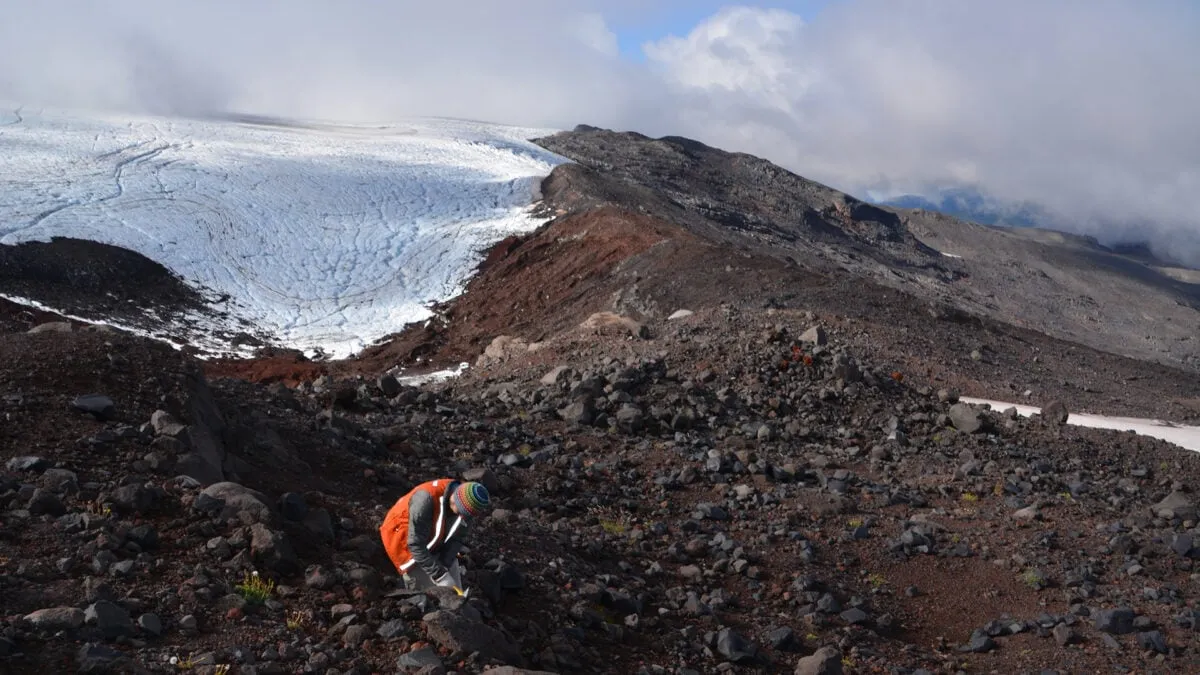
In a startling revelation that adds to the concerns surrounding the climate crisis, researchers have discovered that the melting of glaciers could lead to a significant increase in volcanic eruptions in the future. Across the globe, numerous subglacial volcanoes—formed by past eruptions beneath thick layers of ice—remain dormant. A recent study presented at the Goldschmidt Conference in Prague indicates that as climate change accelerates glacier retreat, these volcanoes may awaken, potentially resulting in a surge of volcanic activity worldwide.
This phenomenon is particularly alarming in West Antarctica, where researchers have identified at least 100 subglacial volcanoes. In this region, glaciers are rapidly vanishing due to rising global temperatures. "Our study suggests this phenomenon isn’t limited to Iceland, where increased volcanicity has been observed, but could also occur in Antarctica," stated Pablo Moreno, a geologist from the University of Wisconsin–Madison and one of the study’s authors. He emphasized that other regions, such as parts of North America, New Zealand, and Russia, also deserve closer scientific scrutiny.
A 2020 study revealed that 245 of the world’s potentially active volcanoes are located beneath or within three miles (4.8 kilometers) of glacial ice. Since the 1970s, Iceland has experienced an uptick in volcanic activity linked to retreating glaciers. However, the recent study represents one of the first comprehensive examinations of how melting glaciers affect volcanic behavior across an entire continent.
To explore the connection between past volcanic activity and glacier retreat, researchers analyzed the melting of the Patagonian ice sheets thousands of years ago, alongside the subsequent eruptions. By employing argon dating and crystal analysis on six volcanoes in southern Chile, including the dormant Mocho-Choshuenco volcano, scientists were able to pinpoint the timing of historical eruptions and assess how the weight and pressure of glacial ice impacted the behavior of magma underground.
The study was a collaboration between scientists from the University of Wisconsin–Madison, the University of California, Los Angeles, Dickinson College, and Lehigh University. Their findings revealed that during the peak of the last Ice Age—approximately 26,000 to 18,000 years ago—the thick ice cover suppressed volcanic activity. This suppression allowed large pools of magma to accumulate between 6.2 to 9.3 miles (10 to 15 kilometers) beneath the Earth's surface.
As the ice sheet began to melt around 13,000 years ago, the sudden reduction in weight caused the Earth’s crust to relax, allowing gases and magma to expand. This buildup of pressure ultimately triggered explosive eruptions. "The key requirement for increased explosivity is initially having a very thick glacial coverage over a magma chamber, and the trigger point is when these glaciers start to retreat, releasing pressure," explained Moreno-Yaeger.
The potential rise in volcanic activity could have significant effects on global climate. Initially, volcanic eruptions release aerosols that can temporarily cool the planet. However, over time, the cumulative impact of multiple eruptions can contribute to long-term warming by releasing greenhouse gases. "Over time, the cumulative effect of multiple eruptions can contribute to long-term global warming because of a buildup of greenhouse gases," noted Moreno-Yaeger. This creates a concerning feedback loop, where melting glaciers precipitate eruptions, and those eruptions, in turn, could further exacerbate warming and melting.
As scientists continue to study this alarming intersection of climate change and volcanic activity, it becomes increasingly evident that the implications for our planet's future are profound and warrant urgent attention.